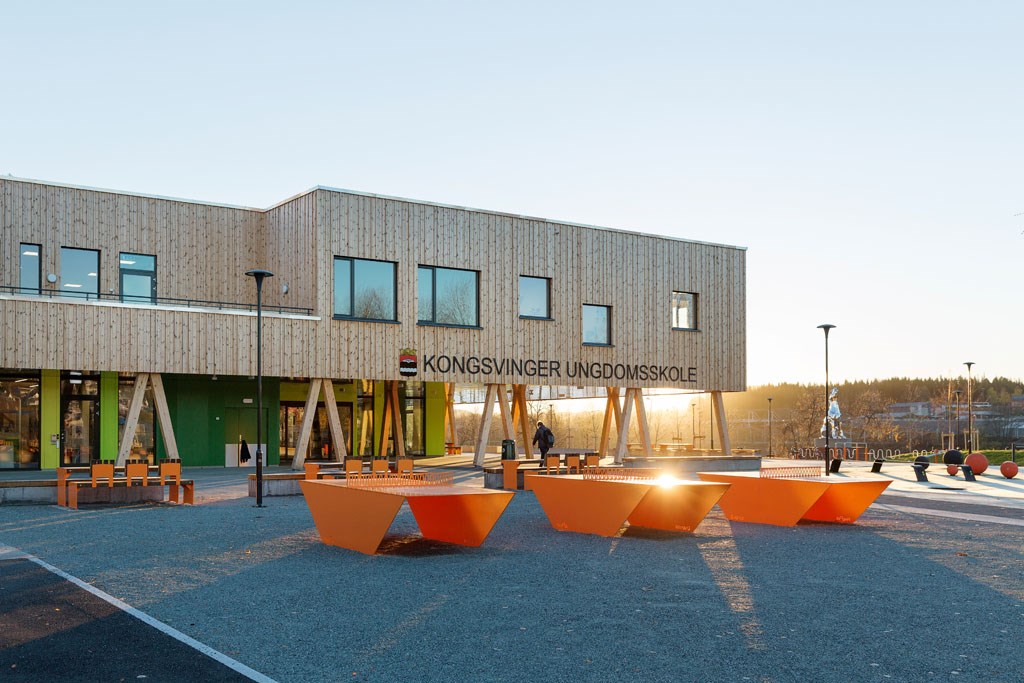A good reason to go green
For the CFO of Kongsvinger Municipality, the maths was simple: a green loan from KBN would save them NOK 6.5 million in interest expense on the Municipality’s new lower secondary school.
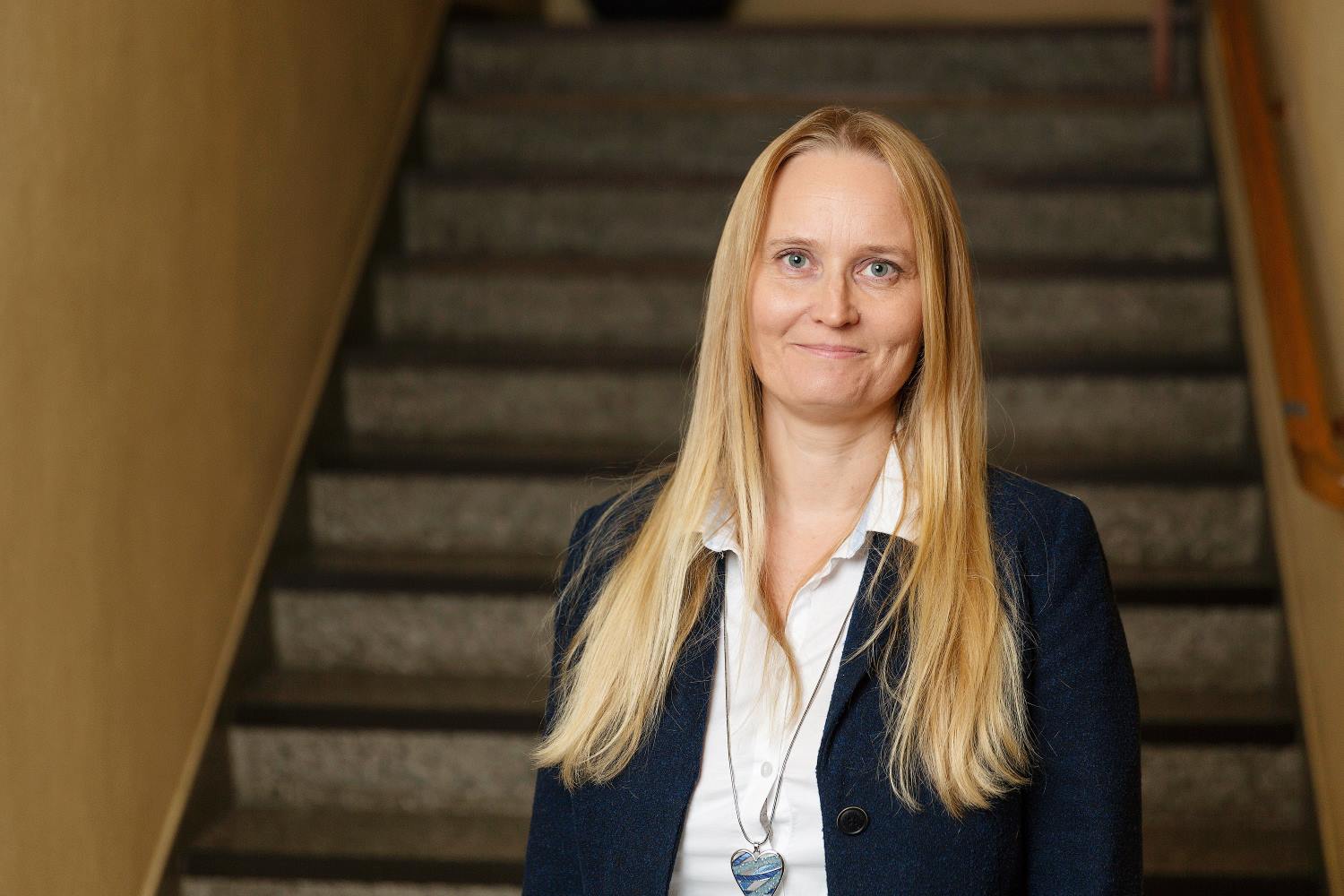
Malin Westby Skoglund is the CFO of Kongsvinger Municipality. The heavily forested municipality with “a green heart” located an hour outside of Oslo has just approved its new vision, which is “Together for a green and vibrant Kongsvinger”. It is a vision that imposes commitments. And this autumn the town can already be proud of a brand new lower secondary school built out of mass timber, which is an environmentally friendly material – financed by a green loan from KBN.
“KBN’s green loans give me as CFO the ability to influence the Municipality in the direction of making green choices”, comments Malin Westby Skoglund.
With an interest rate that is 0.1 of a percentage point lower than KBN’s normal rate, the Municipality will save NOK 3.3 million over the course of the 40-year repayment period. This gives weight to the argument for taking environmentally friendly decisions.
Simple math
Having been the CFO of Kongsvinger Municipality for around a year, Malin Westby Skoglund is relatively new to her role. However, she has extensive experience having served as the CFO of a neighbouring municipality, and she was familiar with KBN’s green loans from before. Malin herself proposed that the Municipality should take out a green loan for the new lower secondary school. And, when she presented the maths, it was difficult to find any reason for taking a different approach.
This is the first time that the Municipality has taken out a green loan. Malin comments that the municipality’s first experience of taking out a green loan has given it a taste for more green borrowing, and she explains that Kongsvinger will in future apply for green loans for all building projects where possible. A new psychiatric housing development, a dementia home and a fire station are next on the list.
“Straight off, I would like to say to people who think that compiling all the documentation needed to be granted a green loan is difficult, that it isn’t”, comments Malin.
Early involvement
Malin is of the view that it is important for the CFOs and heads of real estate management to be in good contact to make the process of applying for a green loan as easy as possible.
“My advice to other municipalities is that they should involve their CFO in their building plans as early as possible. We can then see whether the project satisfies the green loan requirements and can adjust them to ensure that they do, where this is possible”, she comments.
In this instance, it turned out to be the case that the lower secondary school that the Municipality was planning to build already satisfied the requirements to be granted a green loan.
“The real estate management department already had all the documentation needed, meaning there was not much more paperwork needed to apply for the green loan”, explains the CFO.
Green profile
Skoglund is proud of working at a municipality with a green profile and of the fact that she has the support of the elected councillors. When the councillors are concerned with the environment, the Municipality’s administration needs to be as well.
“However, all CFOs should work on their municipality’s environmental profile. Environmentally friendly choices and costs always need to be balanced against each other. Sometimes the environmentally friendly option costs more – but in such situations you have to think about the environmental costs of not choosing the green option. Cheaper green loans can also help balance out any extra costs”, comments Malin.
In the case of the new lower secondary school, it turned out that the cost of building it in mass timber was no more than if the Municipality had chosen concrete and steel. The new school is thus a win-win both for the environment and for the Municipality’s finances.
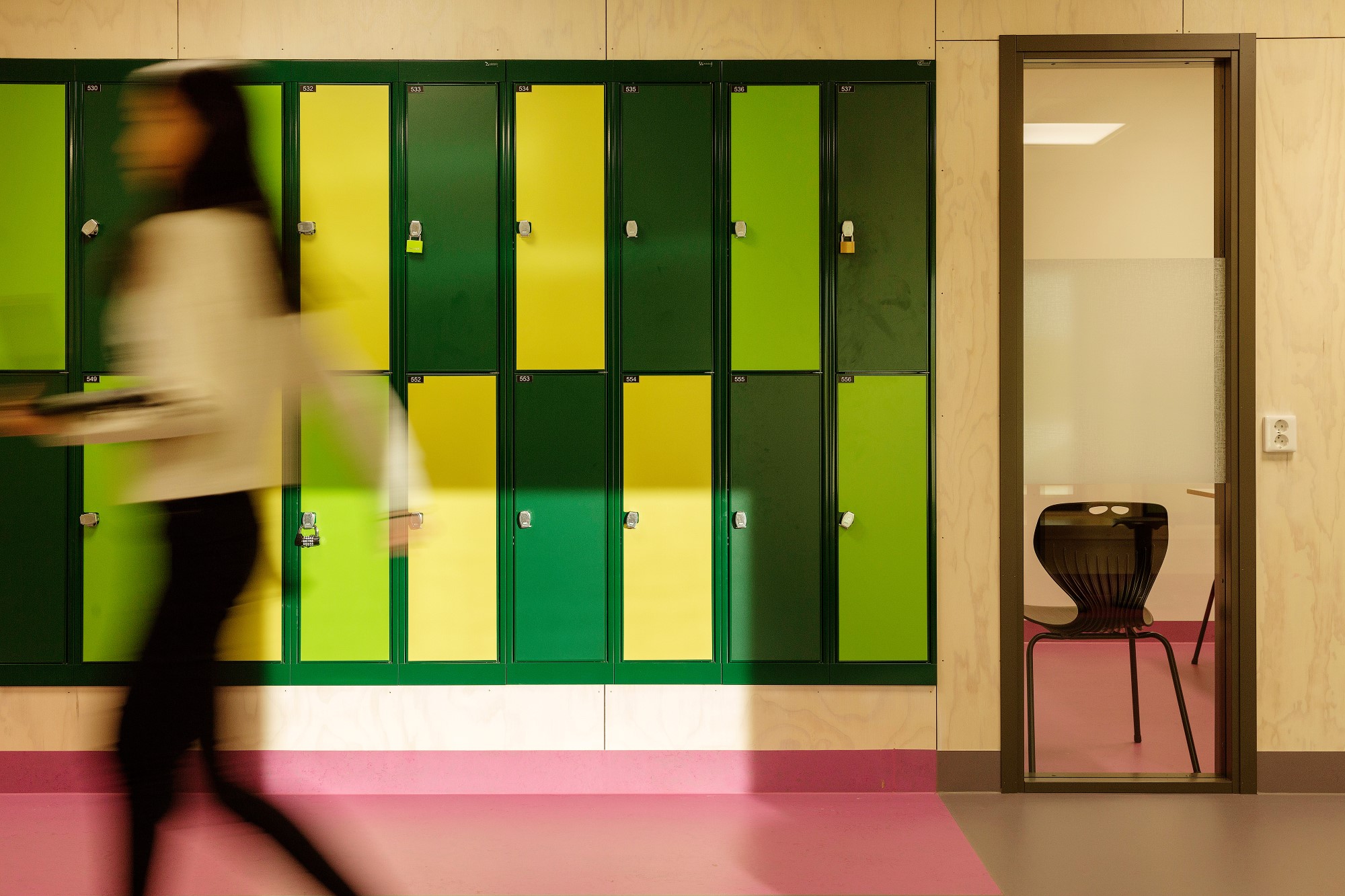 Colourful details. Photo: Jo Straube
Colourful details. Photo: Jo Straube
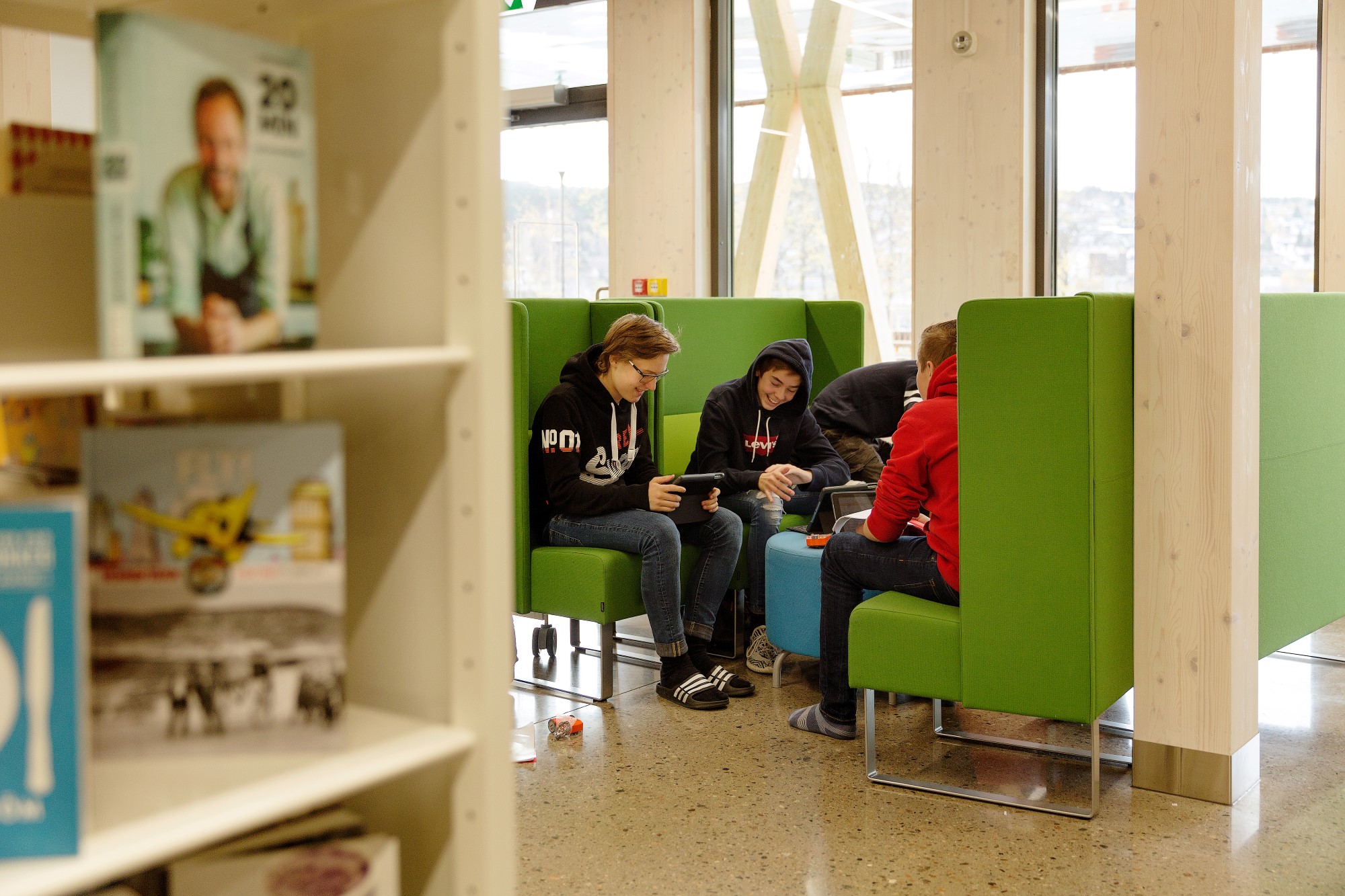 The pupils lover their new library. Phot: Jo Straube
The pupils lover their new library. Phot: Jo Straube
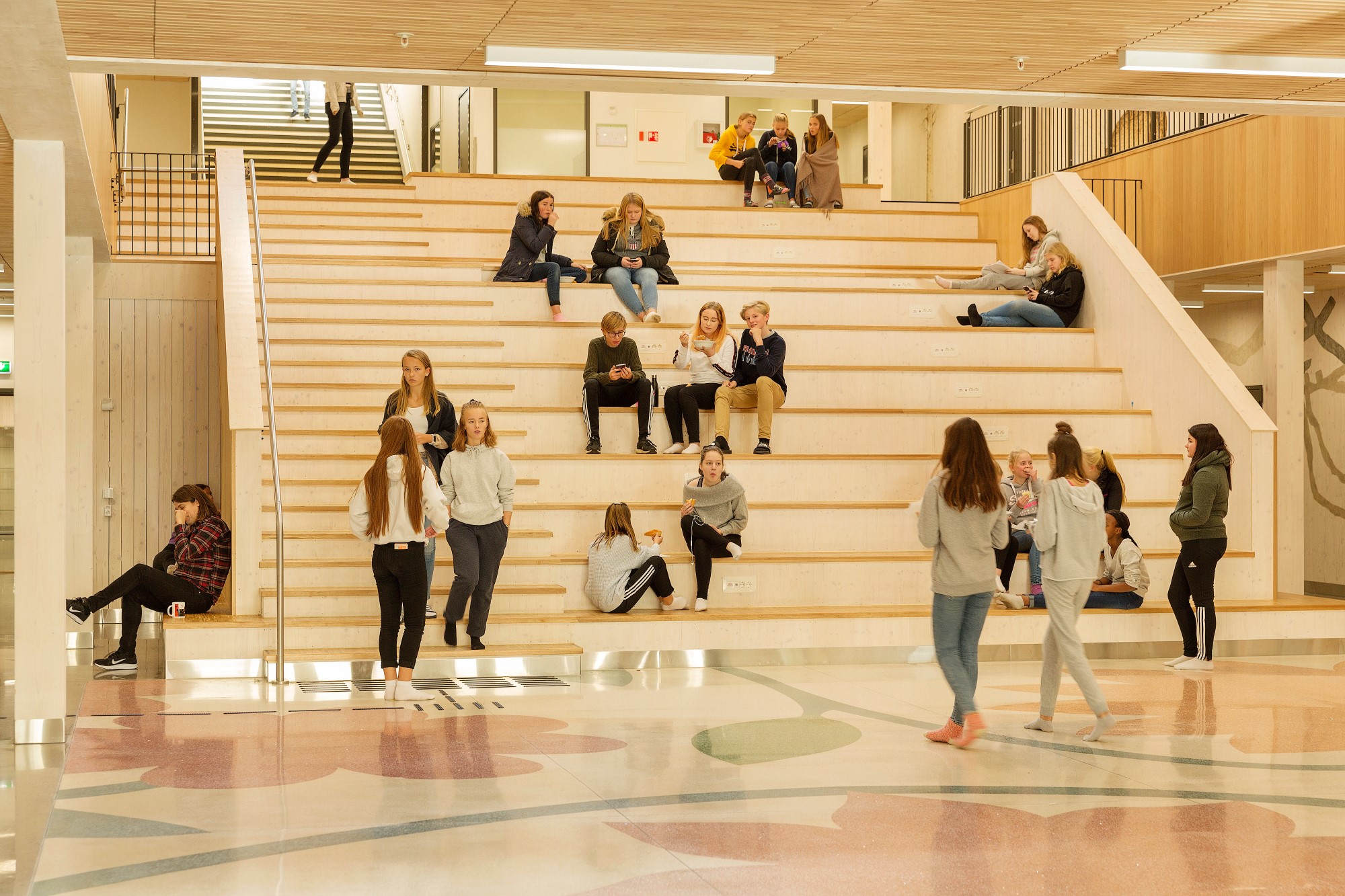 The life-cycle costs of the mass timber building are lower because it is built out of high-quality materials, as well as because one of the requirements set was that the school had to be a low energy building. Building in mass timber also creates a high-quality indoor environment because the building “breathes”. Photo: Jo Straube
The life-cycle costs of the mass timber building are lower because it is built out of high-quality materials, as well as because one of the requirements set was that the school had to be a low energy building. Building in mass timber also creates a high-quality indoor environment because the building “breathes”. Photo: Jo Straube
